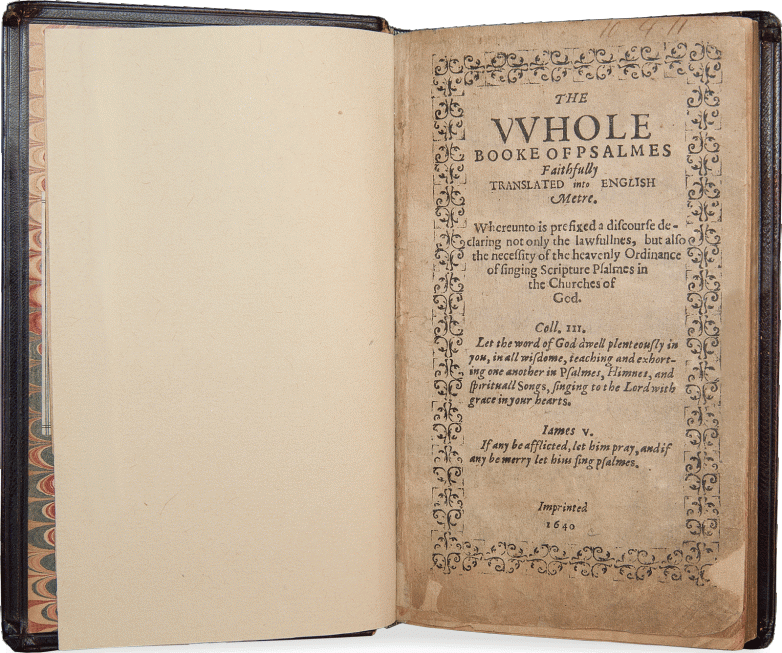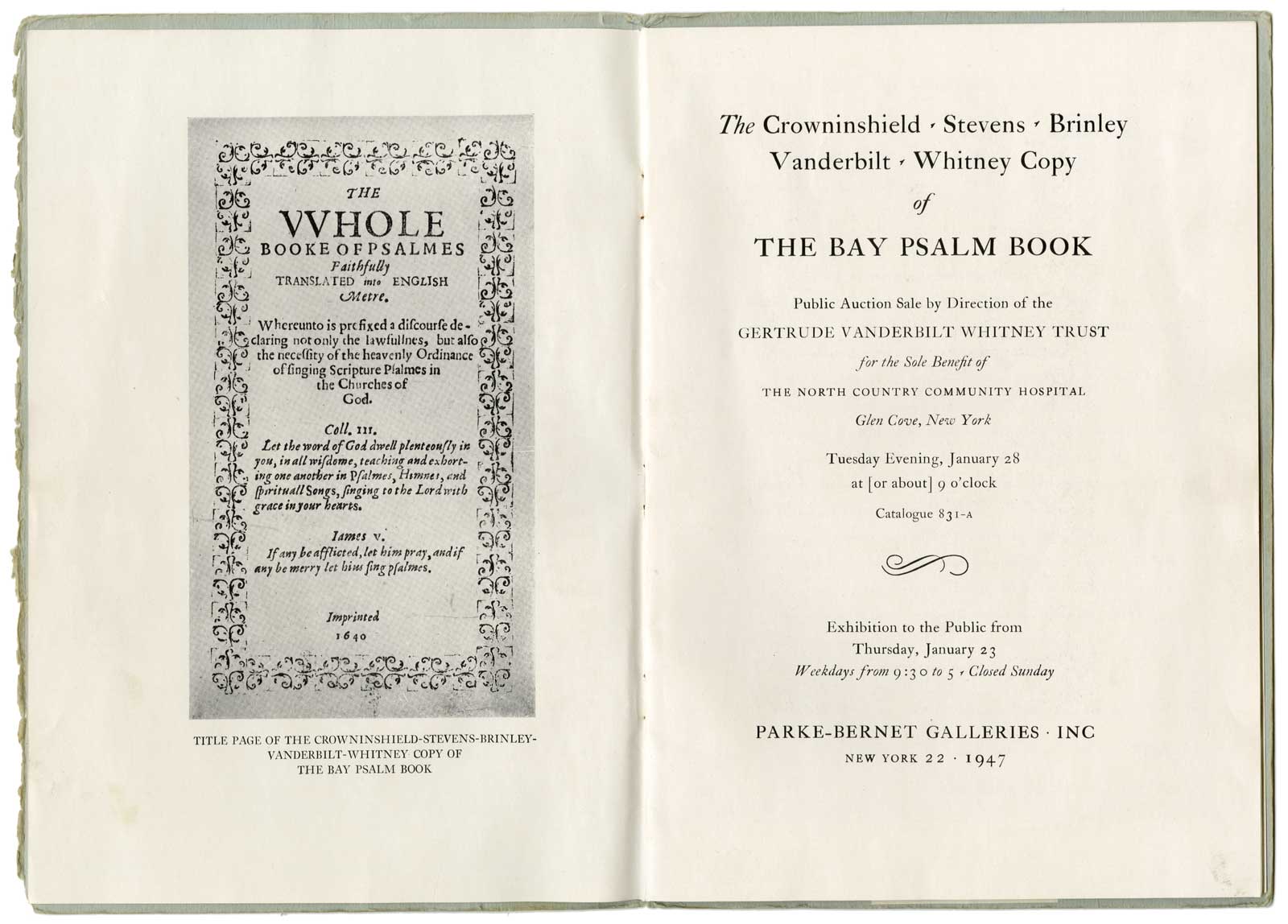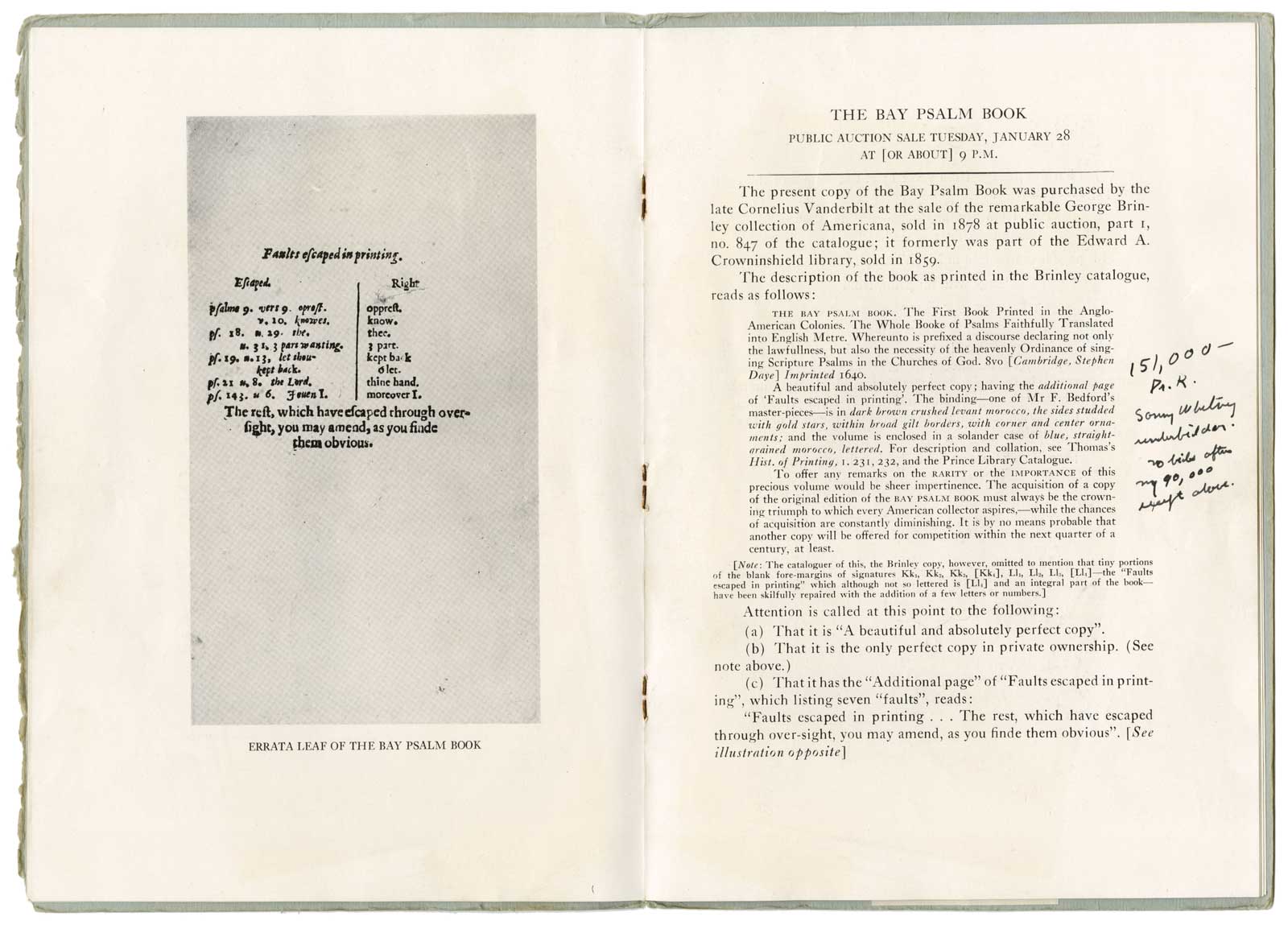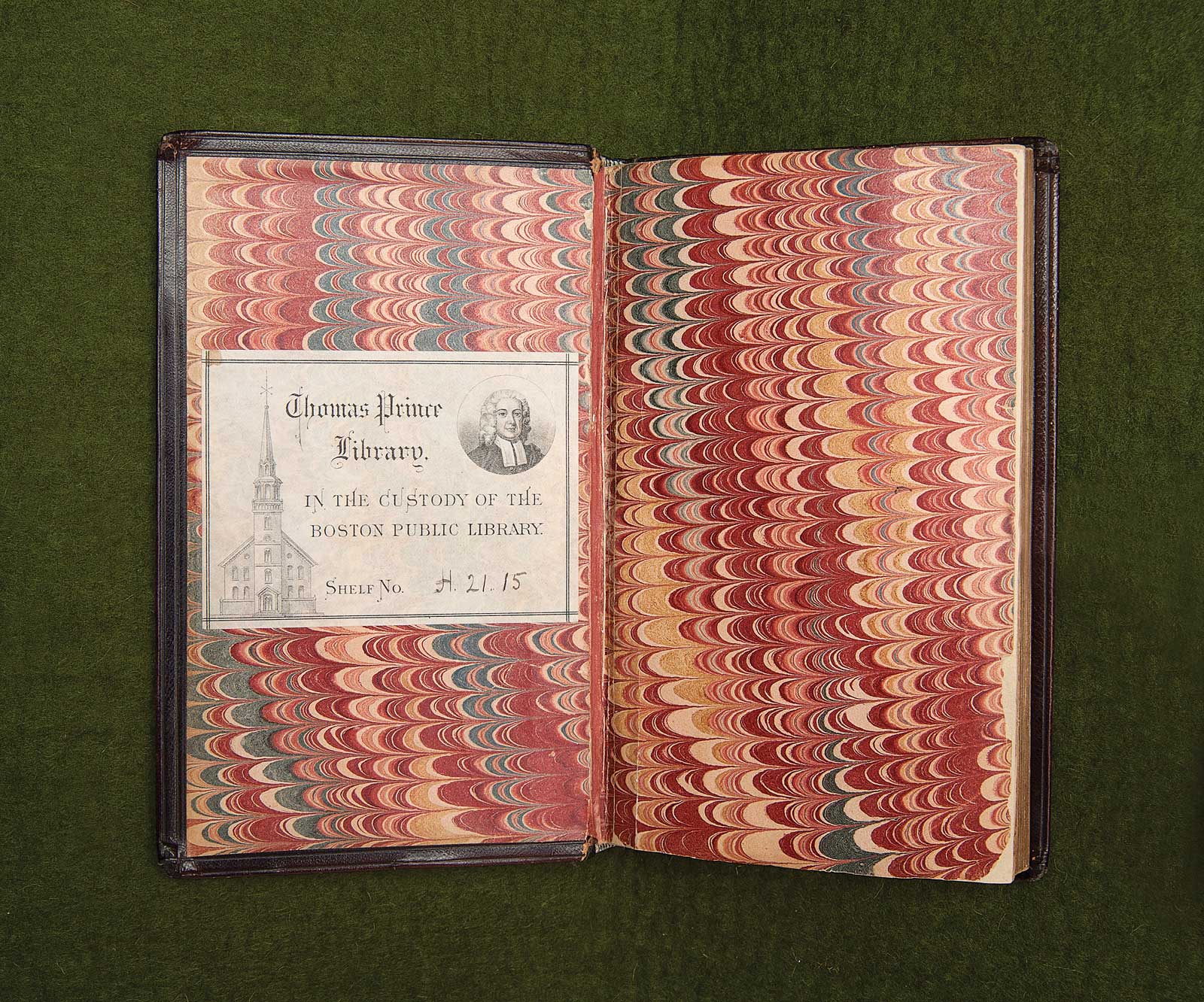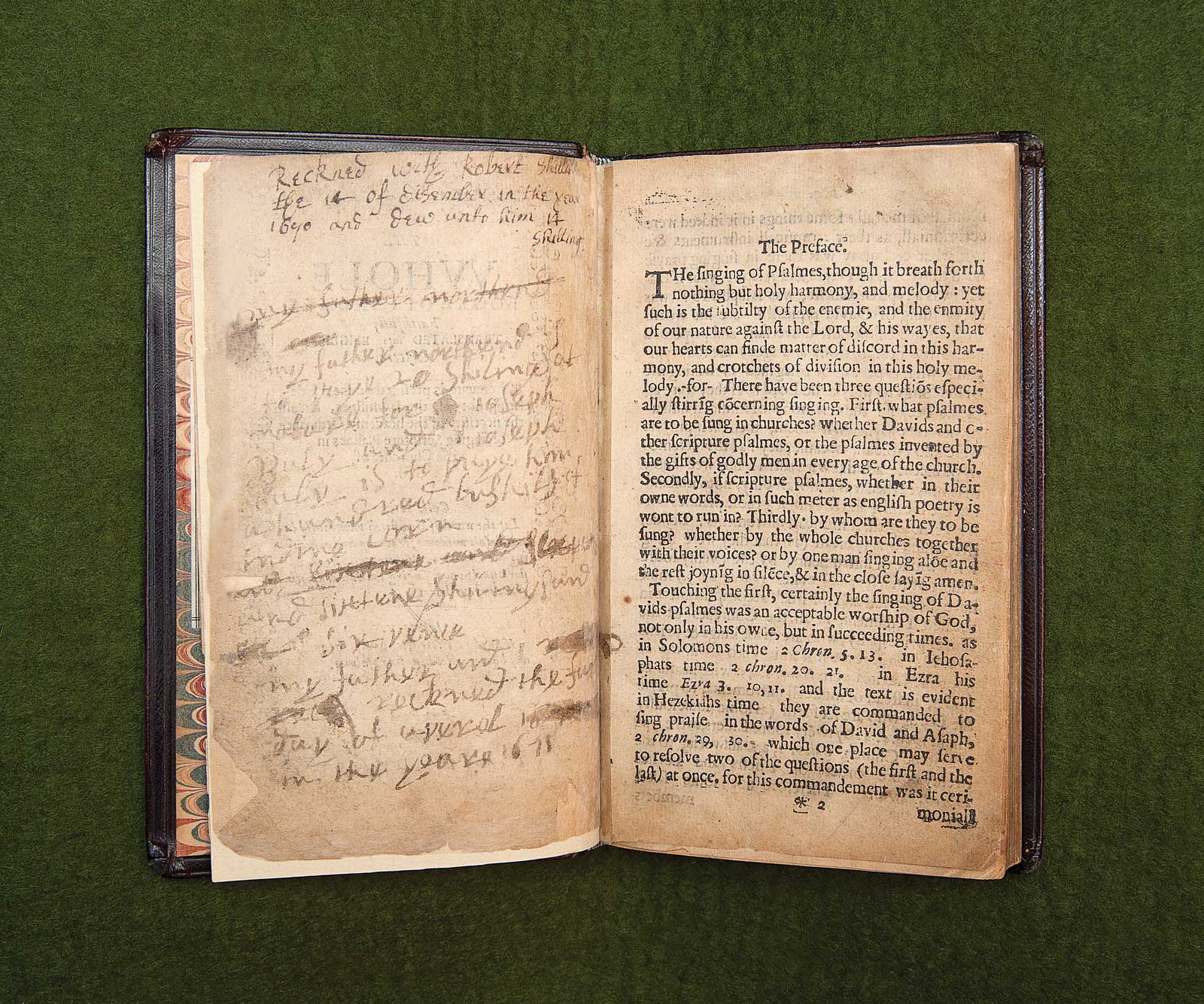Until now. In a highly publicized and somewhat controversial vote of its members, the Old South Church of Boston, the owner of two copies of the Bay Psalm Book, voted in December 2012 to sell one. It’s expected that sometime this year, this copy, which, like the Old South Church’s other copy of the book, has been kept at the Boston Public Library, will be sold at auction to the highest bidder. Estimates of the anticipated sale price will range widely in the many millions of dollars, but like all sales of antiques and works of art, the final price will depend on the state of the financial markets around the time of the auction, and the level of interest and persistence among the wealthy buyers who will compete with each other for the book.
Unless it’s been stolen, it’s unusual for a rare book to be the subject of newspaper headlines, and until last December, the Bay Psalm Book ranked near the bottom of the list of publicly recognized book rarities, well behind the Gutenberg Bible, the Shakespeare First Folio, Audubon’s Birds of America, and Jane Austen’s Pride and Prejudice. But since it’s the first substantial product of the printing press in what is now the United States, as well as a book that hasn’t appeared on the market during the collecting lives of nearly all present-day bibliophiles, there have been predictions that the book may bring as much as $20 million, which will far exceed the present record for printed books of approximately $11.5 million, which was paid in December 2010 for The Birds of America.
The Bay Psalm Book, printed in Cambridge, Massachusetts, by Stephen Daye in 1640, was the first book printed by the newly established Cambridge press. It was probably preceded by a small single-sheet production known as The Oath of a Freeman, of which no copy is extant. The Oath has also been the subject of a great deal of discussion, due to its forgery in the 1980s by Mark Hofmann of Salt Lake City, who produced printed copies of The Oath, one of which was offered to the American Antiquarian Society and the Library of Congress. Hofmann, who had also manufactured and sold a large number of manuscript forgeries, was heavily in debt, and the pressure of his financial affairs led him to commit two murders, before he was seriously injured himself by a bomb that he had constructed. In his forgery of The Oath, Hofmann made use of the ornaments and some of the typography of the Bay Psalm Book, and the close examination of Hofmann’s production, and its typographical inconsistencies, contributed to examiners’ conclusions that The Oath was a modern fabrication rather than a seventeenth-century original.




